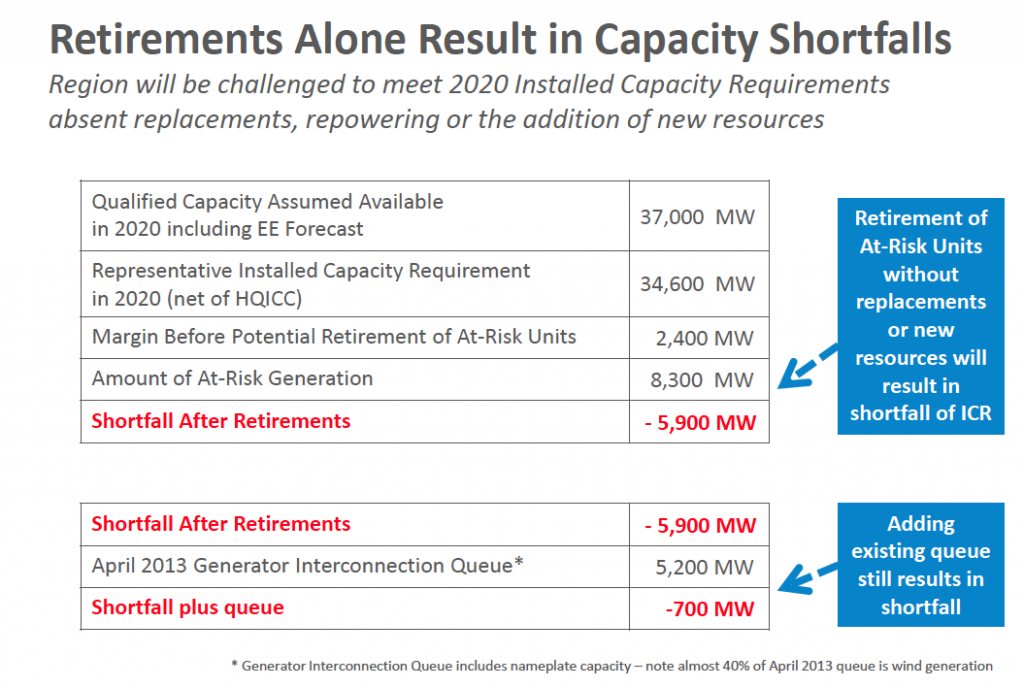Do we need more natural gas in Massachusetts? BEAT doesn’t think so, and here’s why.
According to ISO-New England*, Massachusetts electricity generators need an additional 700MW of energy to maintain an adequate reserve and to compensate for existing power generating sources that are scheduled to go off-line in the near future. For now, let’s accept that figure, but acknowledge also that the need for this power is not continuous. In fact, the “shortfall” that proponents talk about typically occurs on between 10 and 27 days during the year, and on those days it occurs for about 3 hours: about an hour and a half in the morning, and about an hour and a half in the evening. This is the magnitude of the need we’re talking about. In response to this need, the New England governors have asked for a pipeline that would bring into the state 0.6 billion cubic feet of natural gas per day, 365 days per year. Kinder Morgan is proposing a pipeline that would bring in 2.2 billion cubic feet per day.
Do we have ways other than a natural gas pipeline to cover the 700MW shortfall? Let’s first look at how that figure is calculated. Here is a slide used by ISO-NE in a number of their documents. It has also been used recently by Massachusetts EOEEA in their presentations.
It says that New England has a generating capacity of 37,000MW and that our current comfort level is 34,600MW. This gives us a buffer of 2,400MW (first three lines of the table). We must subtract from this number 8,300MW representing electric generating stations that are scheduled to go offline in the near future. This gives us a shortfall of 5,900MW (fourth and fifth lines of the table). But we must add back into this calculation the energy sources that are scheduled to come on-line in the near future. This figure is 5,200MW, and brings us to a total shortfall of 700MW (last three lines of the table).
However, the figure used for sources coming on line is from April of 2013. According to the Federal Energy Regulatory Commission (FERC), this figures has since grown to 8,245MW. So replacing the 5,200MW figure with 8,245MW we get a surplus of 2,345MW.
Also, Distrigas, an LNG terminal in Everett, Massachusetts, has said that their facility can cover any shortfall that may occur in New England, and that they can offer a lower price than Kinder Morgan because they are an existing facility and would not have construction costs. This solution would have the benefit of being a short-term solution that would provide gas only during those 10 to 27 days on which there may be a need, and only until more renewables come online. A pipeline would deliver gas 24 hours a day, 365 days a year, and would represent new infrastructure that would be with us for the next 30 to 50 years.
*ISO-New England, or ISO-NE, can be thought of as the air-traffic controller of our electric grid. According to their website, they serve this function “by ensuring the day-to-day reliable operation of New England’s bulk power generation and transmission system, by overseeing and ensuring the fair administration of the region’s wholesale electricity markets, and by managing comprehensive, regional planning processes.”

